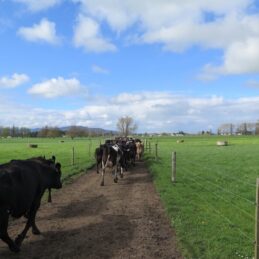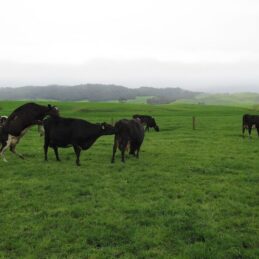Wholecrop cereal silage is an excellent feed source. However, it has a high risk of spoilage due to the hollow stems that trap a lot of air, and also due to the grain content which spoilage yeasts and moulds thrive on, especially in the presence of oxygen. With wholecrop cereal silage harvest just around the corner, now is the time to start thinking about how you can minimise this spoilage and protect its valuable nutrients.
There are three key aspects to focus on when trying to protect wholecrop cereal silage:
- Optimum harvest timing, which give you the best chance of good compaction and getting air out of the stack. Optimum time of harvest for wholecrop silage is 35-38% dry matter (DM), when the stem is starting to turn yellow and the grain is like soft cheese. Approaching harvest, DM % increases about 1% per day for wheat, triticale and oats, and almost 2% per day for barley, so monitoring is essential as you get close to harvest date. Wholecrop cereal silage taken too late makes it difficult to compact, increases the risk of grain loss at harvest and heating spoilage at feedout. For pit/stack silage it is recommended to chop short (<25mm) to give the best chance of optimal compaction, especially in drier silages.
- Protect with MAGNIVA® Platinum inoculant. Heating in silage is an indicator of yeast and mould activity, where they take valuable silage nutrients and convert them to heat and gas. MAGNIVA® Platinum is specifically designed to reduce the risk of heating (which wholecrop cereal silage is very prone to). As shown in Figure 1, wholecrop cereal silage that is treated with MAGNIVA® Platinum shows markedly lower heating in the early stages of fermentation compared with untreated triticale. MAGNIVA® Platinum continues to protect silages later in fermentation and at feedout, with over 50 hours of cool silage once that silage is re-exposed to air (after 100 days of fermentation)1.
- Keep external air out, with SiloStop® oxygen barrier film, and good pest control! External air, or oxygen transferred from the stack surface, is a fuel source for spoilage microbes that thrive in wholecrop cereal silage. A significant reduction in oxygen transfer can be achieved by using SiloStop® Orange oxygen barrier technology. SiloStop® Orange has an oxygen transmission rate of less than 5 cm3/m3/24hrs compared to more than 300 cm3/m3/24hrs for conventional plastic (e.g., black and white). This powerful oxygen barrier can have a significant impact on reducing surface spoilage in wholecrop cereal silage, as shown in Figure 2. Damage to covers is also another entry point for oxygen, so an early and proactive pest control programme before the crop is harvested is highly recommended. Another layer of protection from most pests is the SiloStop® Anti-UV Covers, which are proving popular to add extra insurance to the stack surface.

Figure 2; Silostop Orange oxygen barrier film on wholecrop cereal silage in Canterbury.
For more information on protecting wholecrop cereal silage this season, get in touch with your local Nutritech Area Manager.





